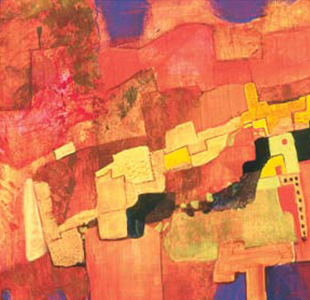Winter Solstice, the time when the hours of darkness have reached their peak and the imperceptible increase of light begins once again. I rejoice in the painstaking snail's pace with which resurrection builds its energy all through the winter months and suddenly erupts in spring with crocus and daffodils. I delight in Winter Solstice because this is the time of year when I reaffirm my uniqueness.
The December holidays underwent a major change for me several years ago while I was living in Brussels. My daughter wrote to say, "I have good news and bad news. Bad news first: I'm not coming this December. The good news is, I've fallen in love." I was delighted with this wonderful turn of events in her life. Yet, at the same time, I was devastated. Through the best of times and the worst of times, before my divorce from her father and after the divorce, the holiday season had always been the time we were together and caught up on each other's lives.
As I walked the parks, seeking solace in nature, I worried about how to care for myself during what I felt would be a very difficult couple of weeks. I asked myself what this season was about if it were stripped of the family framework in which I'd always celebrated it. Having tuned into the rhythms of nature, I knew it was about the rise of light after the descent into darkness, the ascendance of hope after the plunge into despair.
My world travels had taught me that cultures the world over celebrate this annual beginning of a new cycle. Whether it’s the Festival of Lights in India or the elaborate astronomical observations and seasonal festivals from Ireland to Cambodia, all cultures celebrate the infinitesimal return of the light as if it were the birth of a child, a divine child. Steeped in this global awareness, I brooded over Carl Jung's image of the Self as a divine child within the psyche of each of us. That meant the divine child was within me.
"Well, maybe my parents were unable to rejoice in my birth,” I reasoned, “but that is no excuse for my not doing so?" Enchanted with the image of celebrating my own birth and the center of being within me, I turned my attention away from sadness over my daughter's not coming. Returning home, I heard one of the season’s popular songs, The Twelve Days of Christmas playing on the radio. "That's it. I'll celebrate my own birth for twelve straight days!"
Deciding to give myself twelve gifts, one each day beginning with Winter Solstice, I made a list of things that give me pleasure. It included chocolates, a new teapot, getting a set of Motherpeace Tarot cards, and going to the ballet. On December twenty-first, I bought Belgian chocolates and a small ceramic nativity scene made in Peru. That evening, after wrapping gifts for friends in the area, I created a ritual with candles, music, and, yes, chocolates. Each day as I awoke, I would spontaneously decide what my gift that day would be. When going to the ballet presented itself, I hesitated; afraid it might make me despondent because my daughter and I had always seen the Nutcracker Suite together. Remembering one of my Latina friends who was also alone, I invited her to go with me for dinner and the ballet. We had a fabulous time.
Twelve days passed swiftly. I spent many delightful evenings reading Vicki Noble's book MOTHERPEACE, A Way to the Goddess through Myth, Art and Tarot and learning to use the lovely round cards. It was my first exposure to systems of divination and I found it fascinating to see how the cards echoed what was happening in my life. The Osho Zen deck has since become my favorite Tarot.
When I reflected on why my Twelve Days of Christmas had been one of the happiest times of my life, I realized it was the most self-affirming thing I had ever done. I realized that our unconscious registers our self-nurturing behavior. This healthy new appreciation for who we are encourages other healthy behaviors. Being good to yourself is good for you.
Moreover, a time that might have been lonely had been filled with anticipation, fun, and surprise. The negative symbol of my parents' rejection had been overpowered by my own self-acceptance to such an extent that since that breakthrough December, I have gifted myself with my present name, LiDoña. I took the name given to me by the nurse, Donna Lee, turned it around, and adjusted the spelling. Li in Chinese means fire or light. Doña in Spanish or Italian means woman or lady. Thus, LiDoña is Fire Woman or Light Lady.
I've never forgotten the power of self-affirmation and as Winter Solstice approaches each year, I feel a surge of anticipation as I contimplate my Twelve Days of Christmas. One year I celebrated my Artist Child with gifts to enhance my creativity. Another year I gave myself twelve days just for writing. This year, my home restored after the flood on November 28, I will do Twelve Days of Coming Home to Myself.
2011 was the year of the book. I helped edit Prayers for Transition, In Memory of Sandra Anderson True. I helped edit Art Twenty-Eleven, work by thrity-eight of the artists with whom I attend an open studio every other year. I achieved a twenty-five-year goal by publishing PILGRIMAGE Wonder Encounter Witness. The photo above was the state of my home on November 30, the night of my author event at the Jordan Schnitzer Museum of Art in Eugene, photo below. Stay posted for information about my author tour in mid-March to independent bookstores in Seattle, Bellingham, and Spokane in Washington and Moscow, Idaho.
Tonight is the longest night. Tomorrow light begins its magnificent return.











































